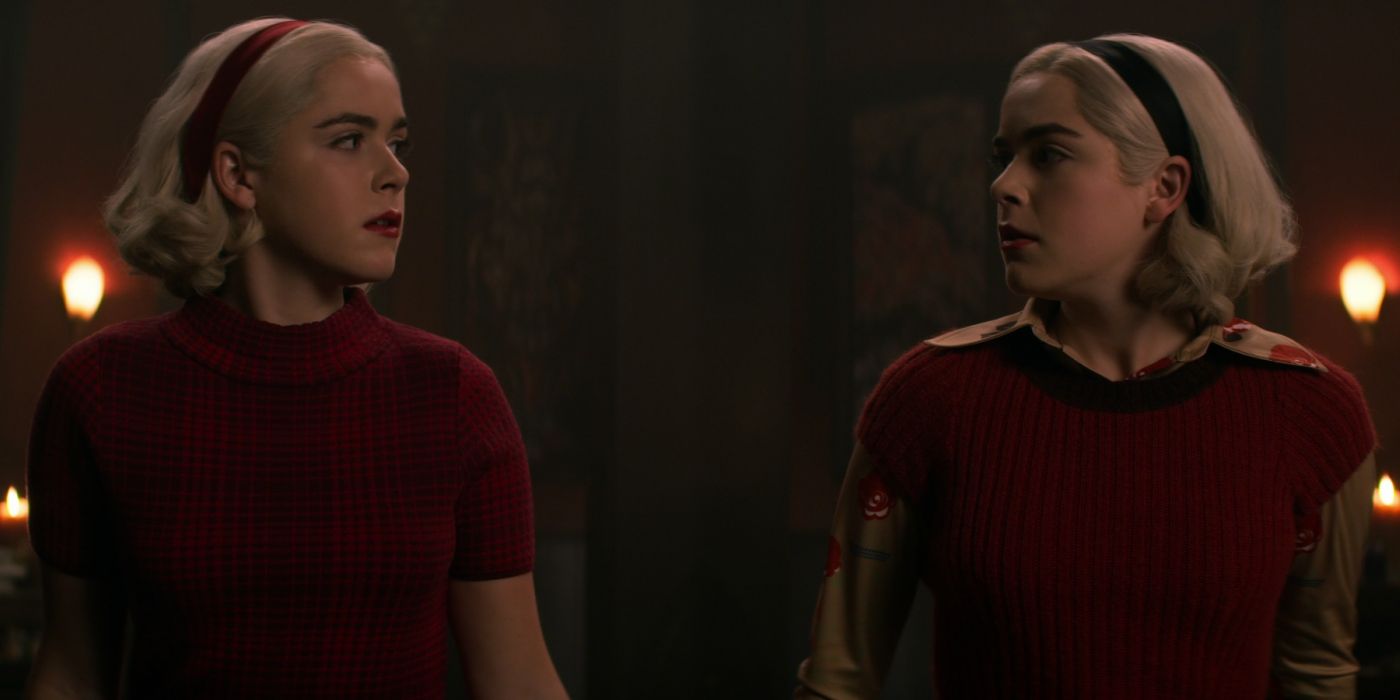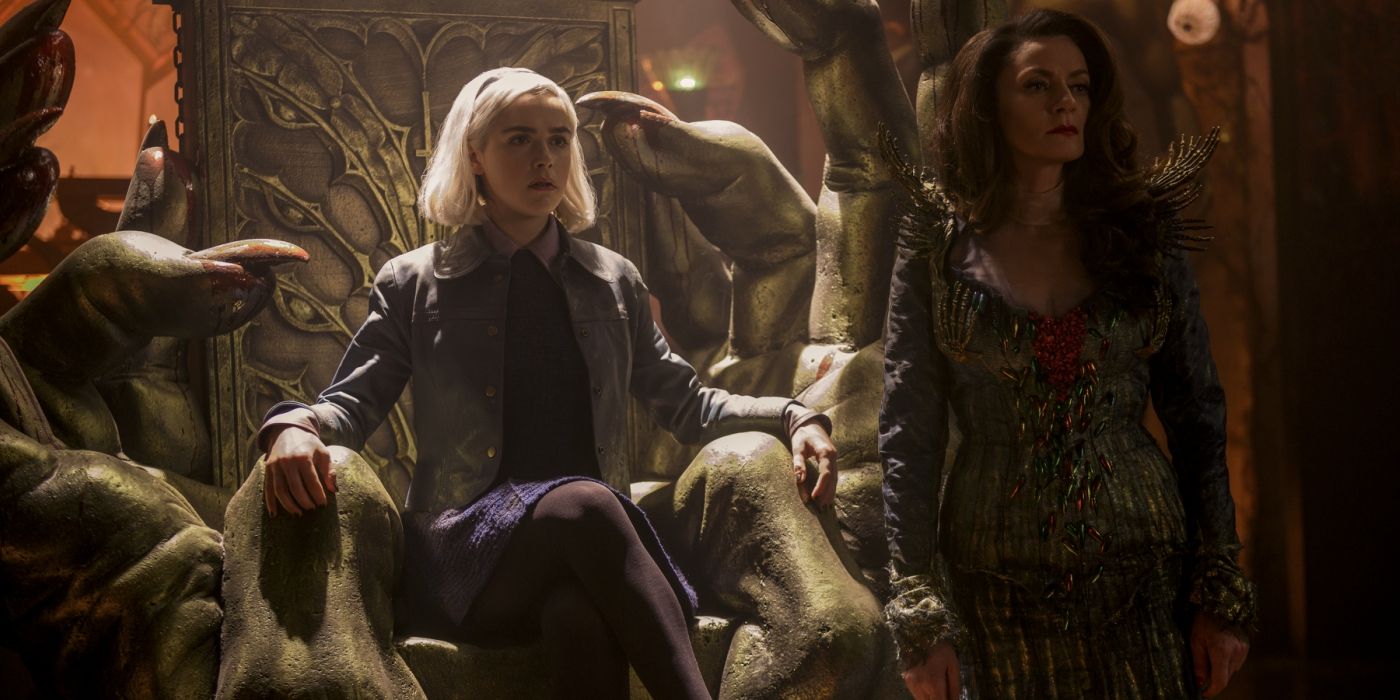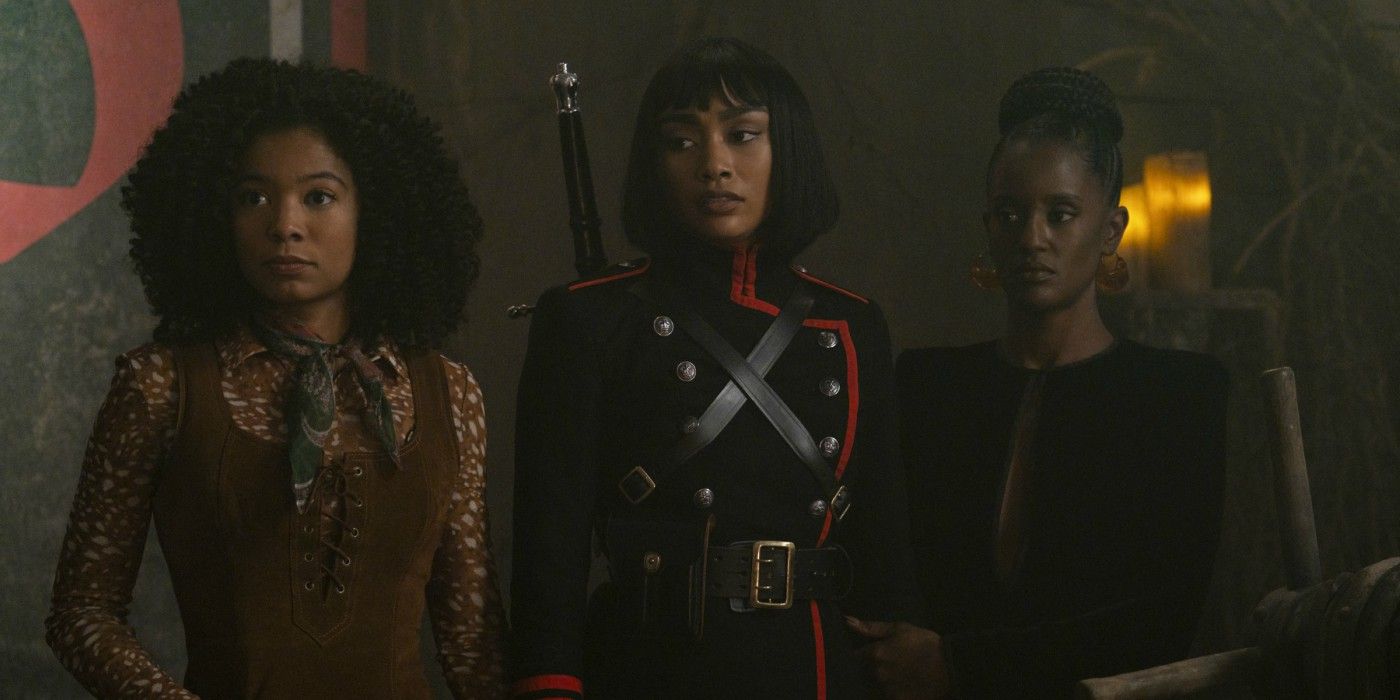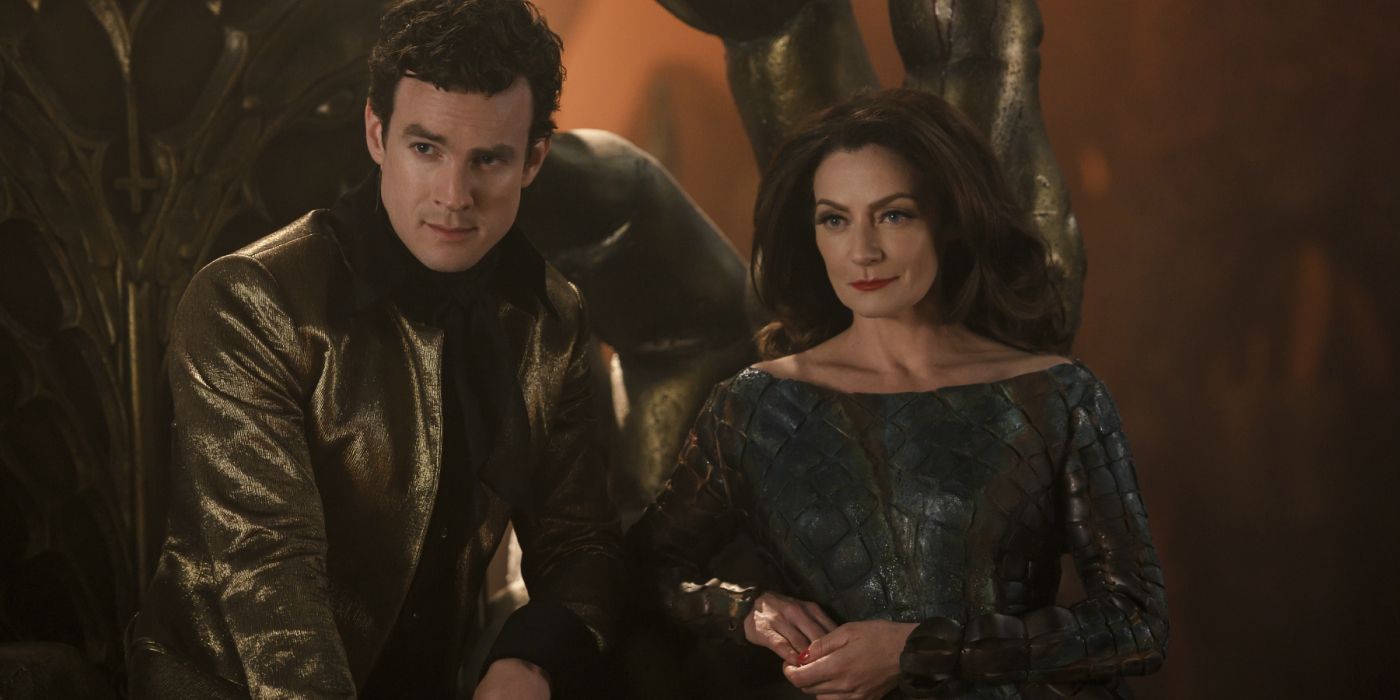Chilling Adventures of Sabrina Season 4 is messy, wandering, and inconsistent; alternately thrilling and disappointing, charming and confusing, dazzling and dizzying — the final season of Netflix’s addictive witchy teen soap is every bit as chaotic as its title character. It’s a fitting, if not particularly satisfying, end to a series where its biggest consistency was being wildly erratic at all times; again, a trait it shared with Kiernan Shipka’s capricious teenage witch.
Strange then that in the show’s most inconsistent season, which sees Shipka playing two versions of Sabrina – one to live out her “normal” teen life and one to rule as Queen of Hell – would be the one in which Sabrina herself finally starts to feel cohesive. Sabrina has always been a somewhat baffling character, and as I emphasized in my Season 3 review, that was often because she always seemed hell-bent on making the worst possible decisions at every opportunity. Which is how we ended up with two dang Sabrinas in the first place! If there was something one obviously should not do, you could bet Sabrina would do it, and in a hurry.
However, in a refreshing surprise, Season 4 delivers a Sabrina who’s finally ready to take responsibility for her actions and the consequences of them. By giving Sabrina a doppelganger, the series allows the warring sides of herself to thrive in their own right, literally gives her an opportunity to hold herself accountable, and most delightful of all, to genuinely love herself. Season 4 is riddled with flaws, which we’ll get into, but there are also elements embedded in the madness that shine as some of the best work in the show. One of those is the decision to let Sabrina love Sabrina; no cattiness or competitiveness, no evil twinning, the Sabrinas genuinely love and trust each other. In earnest, it’s one of the more lowkey moving depictions of confidence and self-love I’ve seen on TV in a long time, which makes it all the more unfortunate that these character advancements are true… until they’re suddenly not.
Because somewhere around the half-way mark, Chilling Adventures of Sabrina Season 4 starts to careen out of control, dropping almost every interesting thread into a tangled mess, and positively hurling into what is by far one of the most bizarre, muddled, and ultimately vexing series finales of all time. It’s a damn shame, though somewhat understandable considering the creative team didn’t plan on Season 4 being the last, already had plans for Season 5, and had to do some fancy footwork to bring it all to close after the surprise cancellation. All the same, it leaves us with a final season burdened by pacing issues (brace yourself for a finale that’s more obviously playing catch-up than anything since Dollhouse) and incomplete character arcs.
Again, the circumstances are just a shame, because it’s clear that the writers had a good structure in mind at first, following a Buffy-esque “monster-of-the-week” format via the so-called Eldritch Terrors. As a result of all that nasty Lovecraftian business Faustus was up to last season, Sabrina and the gang have to face down a new Terror in every episode, each of them bearing ominous names like “The Uninvited” and “The Perverse”. As with most monster-of-the-week stuff, it’s a bit hit and miss, but some of them are genuinely terrifying, and they open up the door to exciting new realms that could have shifted the series towards an even more epic scale in Season 5. But again, that’s not what we’re left with. Instead, Season 4 does a Looney Tunes Roadrunner right off a cliff.
Conflict is introduced only to be immediately resolved, arcs that held such promise are dropped faster than a fallen angel, characters who seem poised to finally get their due (looking at you, Nick, Roz, and Theo) fall into the background noise, while side characters get a spotlight you have to imagine the writers would have pointed elsewhere if they knew this would be the end. Season 3 marked a high point for Chilling Adventures’ signature aesthetic and camp chaos, which only makes Season 4 a more striking downturn - especially when you realize how much of the major plot and character beats from last season seem utterly irrelevant. And that’s before you get to the finale, which makes genuinely outrageous, galling decisions in its final strokes.
In the end, Chilling Adventures of Sabrina is a maddening tapestry of promise and potential, with only the occasional payoff. The Frankenstein stitching required to turn it into a final season is glaring, but as I said earlier, some of those patchwork pieces are among my favorite moments in the entire series run. Most of them have to do with Lilith, who remains unscathed as the series’ most endlessly fascinating and well-developed character. Michelle Gomez, of course, remains a series-stealing queen in the role, and she gets to flex all of her might as her eternal rivalry with Lucifer heats up to some shockingly dark developments. There are also flourishes of beauty in how her dynamic with the now-Hecate-worshipping coven is handled, as well as a particularly inspired use of the pain of childbirth. Then there's the delight of the occasional musical number, which is always a treat with this multi-talented cast.
Elsewhere, the Eldritch Terrors pay off in some of the series’ most fearless moments of horror. Some of them are also very dumb (one so-called “terror” is basically just a really bitchy ball of light), but when done right, they generate a whole lot of effective and spooky-ass imagery. The penultimate episode, a meta bottle-episode that’s equal parts hilarious and chilling, is easily one of the best, most inventive episodes in the entire series run. But again, structurally, having a bottle-episode right before your break-neck finale makes for a baffling, jarring viewing experience.
Fans will find plenty to love in Sabrina’s final eight episodes, but unfortunately, it’s a farewell in which the whole is never greater than – heck, not even equal to – the sum of its parts.
Rating: C




